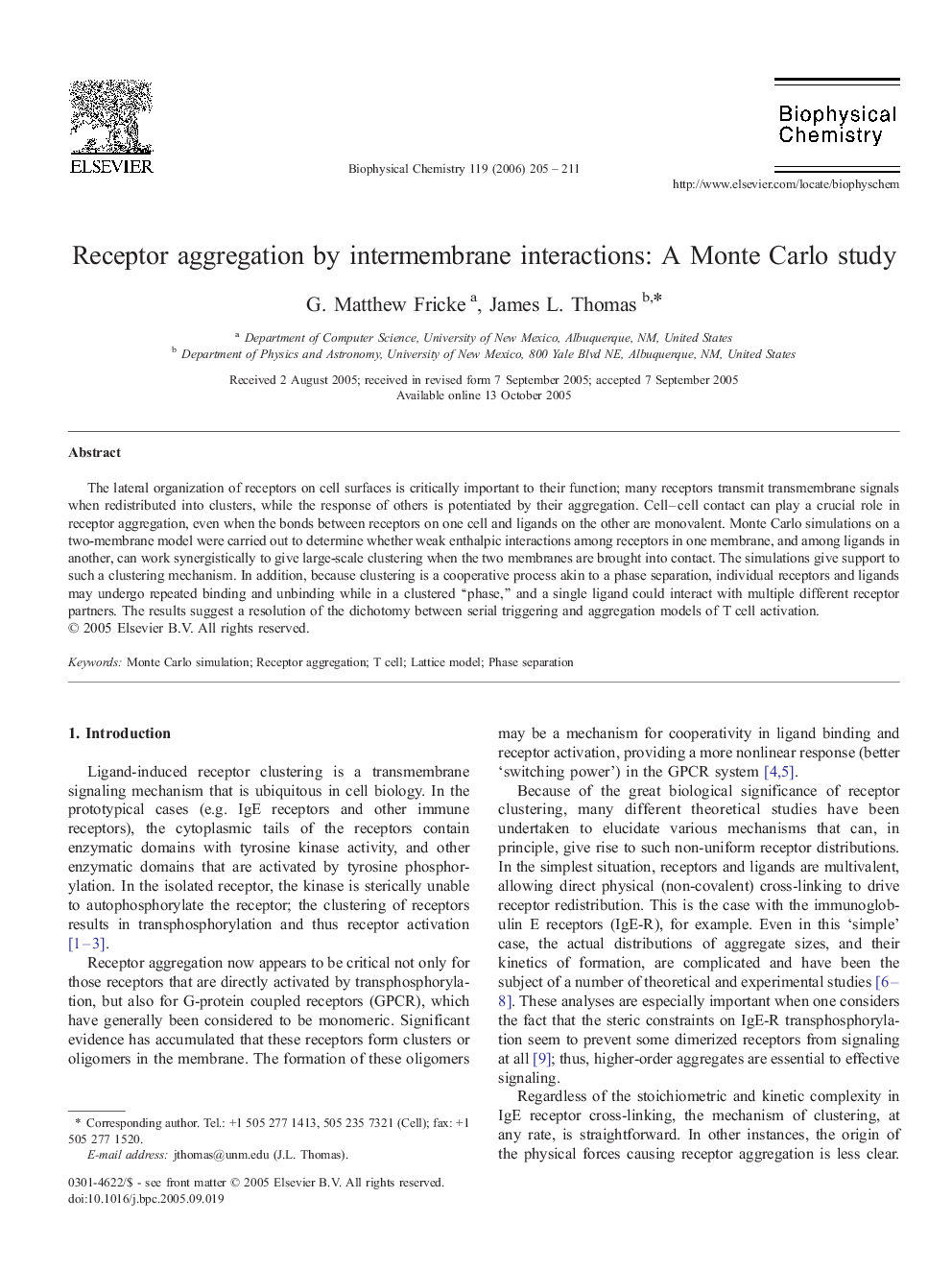| Article ID | Journal | Published Year | Pages | File Type |
|---|---|---|---|---|
| 5372539 | Biophysical Chemistry | 2006 | 7 Pages |
The lateral organization of receptors on cell surfaces is critically important to their function; many receptors transmit transmembrane signals when redistributed into clusters, while the response of others is potentiated by their aggregation. Cell-cell contact can play a crucial role in receptor aggregation, even when the bonds between receptors on one cell and ligands on the other are monovalent. Monte Carlo simulations on a two-membrane model were carried out to determine whether weak enthalpic interactions among receptors in one membrane, and among ligands in another, can work synergistically to give large-scale clustering when the two membranes are brought into contact. The simulations give support to such a clustering mechanism. In addition, because clustering is a cooperative process akin to a phase separation, individual receptors and ligands may undergo repeated binding and unbinding while in a clustered “phase,” and a single ligand could interact with multiple different receptor partners. The results suggest a resolution of the dichotomy between serial triggering and aggregation models of T cell activation.
